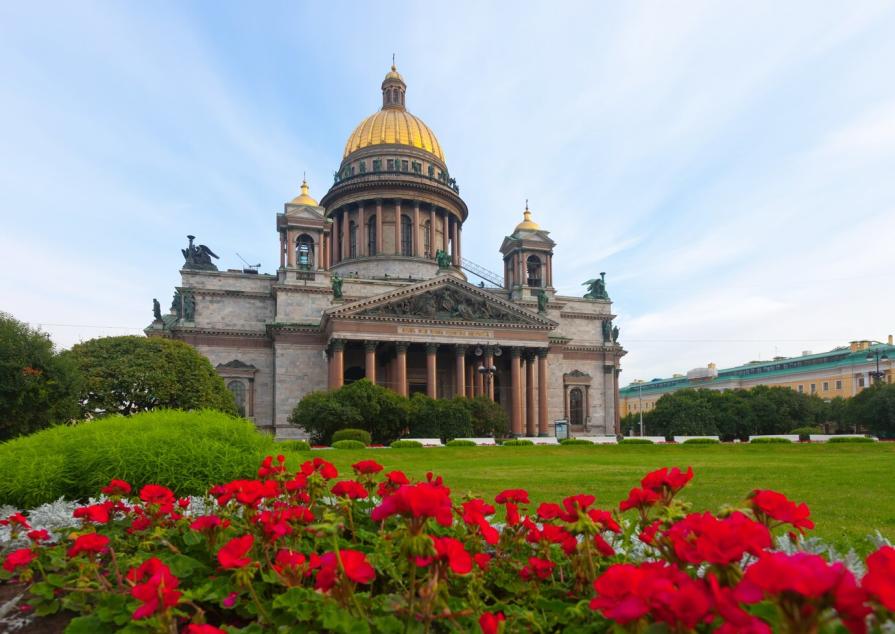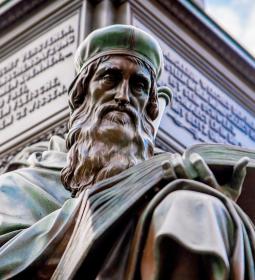St. Petersburg is the largest city in North-Western Russia, the most important port in the Baltic and the second most populous Russian metropolis, moreover, the largest of the northern cities on the planet. It is located on land and four dozen islands in the Neva Delta. When designing it, Emperor Peter the Great was guided by samples of Dutch cities, so there are many bridges and canals.
Since 1991, the city center has been included in the UNESCO list of cultural heritage. We present you a list of the 15 most significant sights of St. Petersburg, which you can still have time to visit this fall.
Alexander Nevsky Lavra and necropolis
There are three cemeteries in the Lavra, which were named after the churches built here:
- Cemetery of St. Lazarus (Lazarevskoye)
- Tikhvin
- Cemetery of Nicholas (Nikolskoye).
The beginning of the first was laid with the burial here of the beloved imperial sister Natalia. This is the first in seniority cemetery in the city. Its purpose is to be the last refuge for representatives of the imperial dynasty and the political, cultural and economic elites of the empire.

Tikhvin opened in 1823. There is the highest concentration of Pushkin's contemporaries and in general many writers and poets. Since 1932, a state reserve and a museum of tombstones have been opened here.
Peterhof Palace
Located no more than 30 kilometers from the city center and is an ensemble of several buildings, gardens and a large number of fountains fed by underground springs and sea water. The most famous is the Grand Cascade, which unites 60 fountains on a number of terraces.
Most of the palace halls, striking magnificence of decoration and richness of decoration, are open to the public. You can get there by bus or sea tram from St. Petersburg, and the duration of such a trip is only 40-50 minutes, and the views of Peterhof from the sea ... You need to see it with your own eyes.
St. Isaac's Cathedral
The largest orthodox basilica on earth, although the main purpose of the building is a museum, and divine services are not held often. It bears the name of Isaac the Confessor, the founder of one of the most important monasteries of the Byzantine capital.
Construction was completed in 1858 after half a century of work. The museum's collection stores several dozen icon-painting masterpieces, mosaics, frescoes, but most often people come here to look at St. Petersburg from a 43-meter observation deck.
Hermitage
The State Hermitage was founded by order of Catherine II in 1764 to collect works of fine arts, but it became a public museum only in 1852. Now it is the second largest collection of arts after the Louvre, storing more than 3 million exhibits. It occupies six buildings, although the basis of the exposition, as before, is stored in the Winter Palace - the former house of the Russian dynasty.
Peter & Paul's Fortress

A stronghold created to protect against encroachments on the city from the sea. It was built and expanded for half a century since 1703. Twice dealt with foreign invasions: in 1941-1945 and 1812. Before the revolution, it was a prison for political, and now it is part of the Museum of the History of St. Petersburg.
Inside the city walls there are several buildings, the most famous of which is the Peter and Paul Cathedral, the tomb of the royal dynasty. There are also blocks of casemates with prison cells, the mint of St. Petersburg, minting a coin from 1724, a museum of the history of the city.
Catherine Palace
The building in the mature Baroque style was the summer residence of the Romanovs. It is located 25 kilometers from the city. It was designed in 1717 by the German architect Braunstein, repeatedly rebuilt. During the nazi invasion, the palace was almost completely destroyed, but restorers for decades scrupulously restored its appearance. The brightest pearl in this decoration should be considered the legendary Amber Room.
Alexander Palace (Tsarskoye Selo)
Catherine the Great's gift to her beloved grandson Alexander. In this place, the family of the last Russian tsar was under arrest from the moment of abdication until he was sent to the Urals.
Between the wars it was used as a museum, and then as the administrative center of the NKVD. The building managed to survive the war with minimal consequences and preserved most of the interiors, paintings and furniture, as well as a collection of military and particular clothing.
Vasilievsky Island

A small island opposite the central part of the city with its own metro line. There is a lot of stuff - from parks and old quarters to the museum quarter, the Exchange building, where until recently the Maritime Museum was located, and the palace of Mikhail Menshikov, a Baroque masterpiece. There are also buildings of the Academy of Sciences and the Institute of Russian Literature, where autographs of classics of Russian literature are stored.
Palace Square
The main urban public space is where rallies, concerts are held, revolutions and regicidacies are periodically played out. All in all, a strong point.
Mariinsky Theatre
The imperial troupe was created by order of the wife of Peter I, but only in 1860 they were presented with their own theater building - the most outstanding concert venue in Russia. Made in the style of neoclassicism with elements of Byzantine décor. The hall has a U-shape and is decorated with ceiling frescoes and a huge chandelier. One of the symbols of the city: every self-respecting intellectual in the N-generation must visit here.
Kunstkamera
Peter the Great wanted his personal collection of curiosities and deformities to be moved from the old capital to St. Petersburg. And so it happened: in a specially created museum, surrounded by salted heads, with his yard, he received foreign delegations.
Especially interesting is the exposition of defective animals and human fruits. In 1716 the anatomical theater was supplemented with a collection of minerals, later transferred to the Academy of Sciences.
Russian Museum

Along with the Tretyakov Gallery, this is the largest collection of Russian national art: there are more than 300,000 samples of various fields of fine arts and folk crafts. It was originally created by Alexander III the Peacemaker, and his son presented the Mikhailovsky Palace for the meeting. Here, after the revolution, the most valuable things taken from the nobles were brought.
Church of the Savior on Spilled Blood
One of the most beautiful temples of the Northern Capital was built on the site of the execution of Emperor Alexander II by the Narodovolts. Finally all the work was completed by 1904.
Badly damaged during the Great October Revolution, in World War II it was used as a morgue and a warehouse of potatoes. In the 1980s, after the restoration, the building was returned to its former appearance, but not functionality - it is first of all a mosaic museum, and only then a church.
Kazan Cathedral
Domestic replica of St. Peter's Basilica in the eternal city. Construction lasted 10 years, and after completion the temple became the most important monument to the victory over Napoleon. Since 1932, a museum of the history of religion and atheism has been located on the site of the temple.
Smolny Cathedral
Initially conceived as a monastery, but then became the Institute of Noble Maidens - a school for girls from noble families of St. Petersburg. Quarenghi was built, surrounded by a beautiful garden. In 1917 in Smolny was the headquarters of the revolution.












